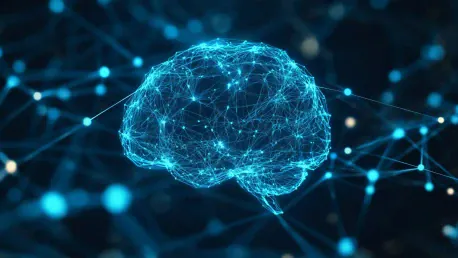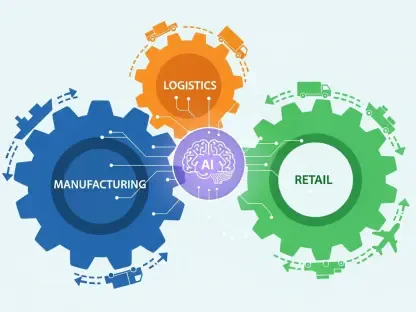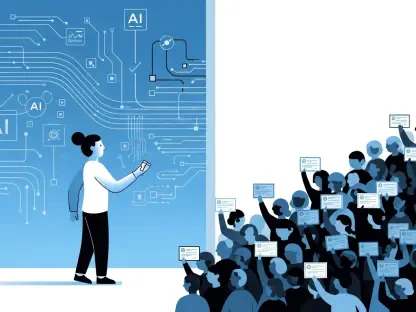Laurent Giraid is a technologist with vast expertise in Artificial Intelligence. His interests primarily lie in machine learning, natural language processing, and the ethical aspects surrounding AI. Today, Laurent will discuss the nuances between human intelligence and AI, the future of wireless networks, and how AI can evolve to incorporate common sense capabilities.
Can you explain the major difference between human intelligence and current AI capabilities?
The major difference lies in common sense. Humans possess common sense, which allows them to reason, plan, and adapt to new situations intuitively. Current AI systems, however, are primarily driven by data and can capture patterns but struggle to navigate unforeseen scenarios. This limitation hampers their ability to function like humans in complex, real-world environments.
What is the primary focus of your new paper published in the Proceedings of the IEEE journal?
Our paper explores the integration of next-generation AI into wireless technologies to create systems that can think, imagine, and plan like humans. We propose a roadmap for achieving these living, thinking wireless networks by gradually implementing the necessary AI capabilities. The paper emphasizes the symbiotic relationship between advanced AI and wireless technology as a cornerstone for future innovations.
How does common sense play a role in advancing AI to human-like intelligence?
Common sense is crucial because it enables AI to handle new and unforeseen situations by reasoning and drawing analogies, much like humans do. It allows AI systems to connect the dots and fill in missing information, making them more adaptable and effective in diverse applications. Without common sense, AI is limited to predefined tasks and struggles with novel scenarios.
What is artificial general intelligence (AGI) and how does it differ from current AI systems?
AGI refers to AI systems that possess the ability to understand, learn, and apply knowledge across a wide range of tasks at a level equivalent to human intelligence. Current AI systems, on the other hand, are typically narrow and specialized, excelling in specific areas but lacking the generalization and flexibility that human intelligence offers. AGI aims to bridge this gap by incorporating broader cognitive capabilities.
Could you outline the roadmap you’ve proposed for achieving living, thinking wireless networks?
Our roadmap involves several phases, starting with the integration of AI-native networks in 6G systems. The focus is on embedding AI within wireless networks to enhance their ability to manage and optimize operations autonomously. Future phases include developing AI with common sense abilities and leveraging digital twins to create hyper-dimensional world models. Ultimately, this will lead to wireless networks with human-like reasoning and problem-solving capabilities.
What specific improvements differentiate 5G and 6G wireless networks?
The primary improvements from 5G to 6G involve the integration of AI architectures and open radio access networks. 6G aims to embed AI deeply within the network to handle real-time data processing, enhance efficiency, and support new applications like augmented reality and the metaverse. This shift is expected to surpass the performance and capabilities offered by 5G, enabling more intelligent and adaptive network operations.
Why do you believe next-generation AI and wireless technologies are interdependent?
Next-generation AI and wireless technologies are interdependent because each can significantly enhance the capabilities of the other. AI can optimize and manage wireless networks more efficiently, while advanced wireless technologies provide the necessary infrastructure for deploying and scaling AI applications. This symbiosis is essential for creating networks that can operate at higher levels of intelligence and functionality.
How do previous generations of wireless networks enhance performance?
Previous generations focused on improving core components such as antennas and communication technologies, leading to increased speed, capacity, and reliability. Each generation brought incremental advancements, such as 4G’s support for mobile internet and video streaming, and 5G’s low latency and higher data rates. These enhancements have collectively paved the way for more sophisticated and capable network systems.
How do you propose overcoming the limitations of rule-based AI solutions for 6G networks?
To overcome these limitations, we advocate for the development of AI systems that go beyond narrow, rule-based solutions. This involves integrating common sense capabilities that allow AI to reason and adapt in novel situations. By leveraging advanced machine learning techniques and understanding the principles behind human cognition, we can create AI that is more flexible, trustworthy, and capable of handling complex, dynamic environments.
Can you elaborate on the concept of common-sense AI and its importance?
Common-sense AI refers to systems endowed with the ability to understand and reason about the world in a way similar to humans. This is important because it allows AI to make sense of new and unexpected situations, learn from minimal data, and draw logical inferences. Such capabilities are essential for developing AI that can interact seamlessly with the world, providing more meaningful and reliable support in diverse applications.
How might common sense help AI navigate unforeseen scenarios?
Common sense enables AI to make educated guesses and reasonable decisions when faced with unexpected situations. It allows AI to draw on past experiences, use analogy, and fill in missing information, much like humans do. This ability to adapt and improvise is crucial for AI to be truly effective in real-world environments, where not everything can be anticipated or predefined.
How critical is hyper-dimensional AI to future wireless networks?
Hyper-dimensional AI is critical because it can manage the vast amounts of data and complex interactions required for future wireless networks. It involves creating detailed models of the physical, virtual, and digital worlds, enabling seamless synchronization and intelligent decision-making. This advanced level of AI is necessary to support the sophisticated applications and environments envisioned for future networks.
What are the quality-of-service requirements needed for synchronizing physical, virtual, and digital worlds?
Synchronizing these worlds requires extremely high standards of wireless quality-of-service, including low latency, high reliability, and significant bandwidth. The network must be able to handle real-time data processing and communication with minimal delays to ensure a seamless and immersive experience across all dimensions.
How do you envision the metaverse contributing to AGI-native networks?
The metaverse can provide an integrated platform for developing and testing AGI-native networks. By creating digital representations of the physical world and enabling real-time interaction, the metaverse can help AI systems acquire the necessary perception, reasoning, and planning abilities. This environment allows for the development of more robust and human-like AI that can operate effectively within complex, dynamic networks.
What missing elements do you believe would transform wireless networks into human-like thinking networks?
The key missing elements are advanced AI capabilities, particularly those related to common sense, reasoning, and adaptability. Incorporating these elements involves deep integration of mathematical principles, category theory, and insights from neuroscience to model and mimic human cognition. Additionally, leveraging digital twins and hyper-dimensional models can provide the necessary framework for creating truly intelligent and adaptable wireless networks.
How important is the fusion of mathematical principles, category theory, and neuroscience for building advanced AI models?
This fusion is extremely important because it provides the theoretical and practical foundation for developing AI that can understand and interact with the physical world in a human-like manner. Mathematical principles and category theory help in structuring and reasoning about complex systems, while insights from neuroscience inform the modeling of cognitive processes. Together, they enable the creation of AI models that can learn, reason, and adapt more effectively.
How does integrating common sense into AI potentially address current network limitations?
Integrating common sense into AI can dramatically enhance the network’s ability to handle unexpected situations and novel problems. It enables the AI to make informed decisions, draw logical inferences, and adapt quickly, thereby improving the overall efficiency, reliability, and robustness of the network. This can address many of the limitations of current rule-based AI systems, which often struggle with dynamic and complex environments.
How do you foresee the intersection of AI and wireless technologies evolving beyond 6G?
Beyond 6G, we can expect a deeper convergence of AI and wireless technologies, leading to networks that can think and adapt like humans. This evolution will involve the development of AI with general intelligence capabilities, integration of digital twins for real-world modeling, and continuous advancements in wireless technology to support higher levels of interaction and data processing. The ultimate goal is to create intelligent networks that can autonomously manage and optimize themselves, providing unprecedented levels of service and efficiency.
Do you have any advice for our readers?
My advice is to stay curious and open-minded about the future of AI and wireless technologies. These fields are rapidly evolving, and the integration of advanced AI into our communication networks will bring about significant changes and opportunities. Keeping up-to-date with the latest research and developments, and actively participating in related discussions, will be crucial for anyone looking to contribute to or benefit from these advancements.









